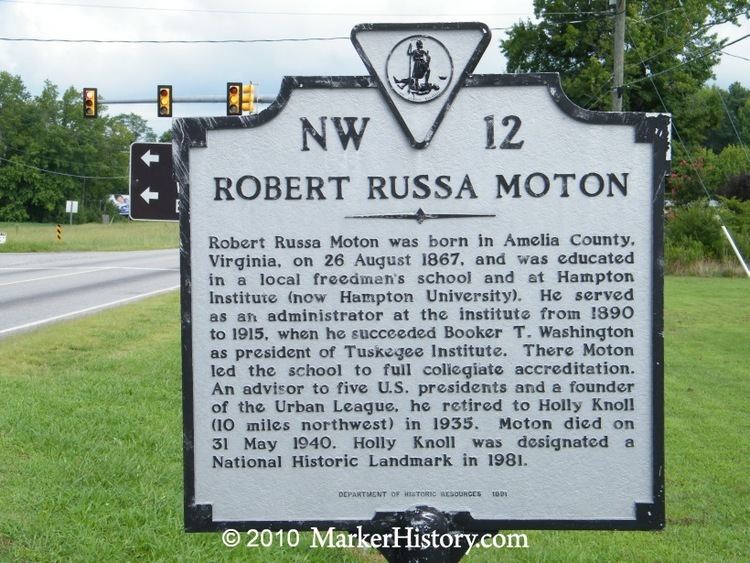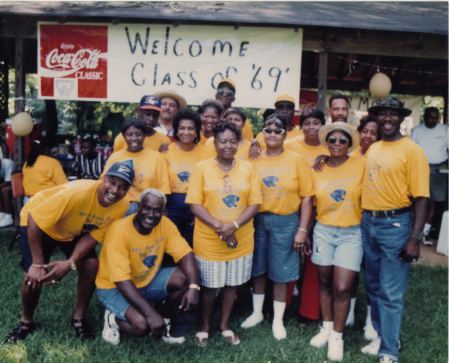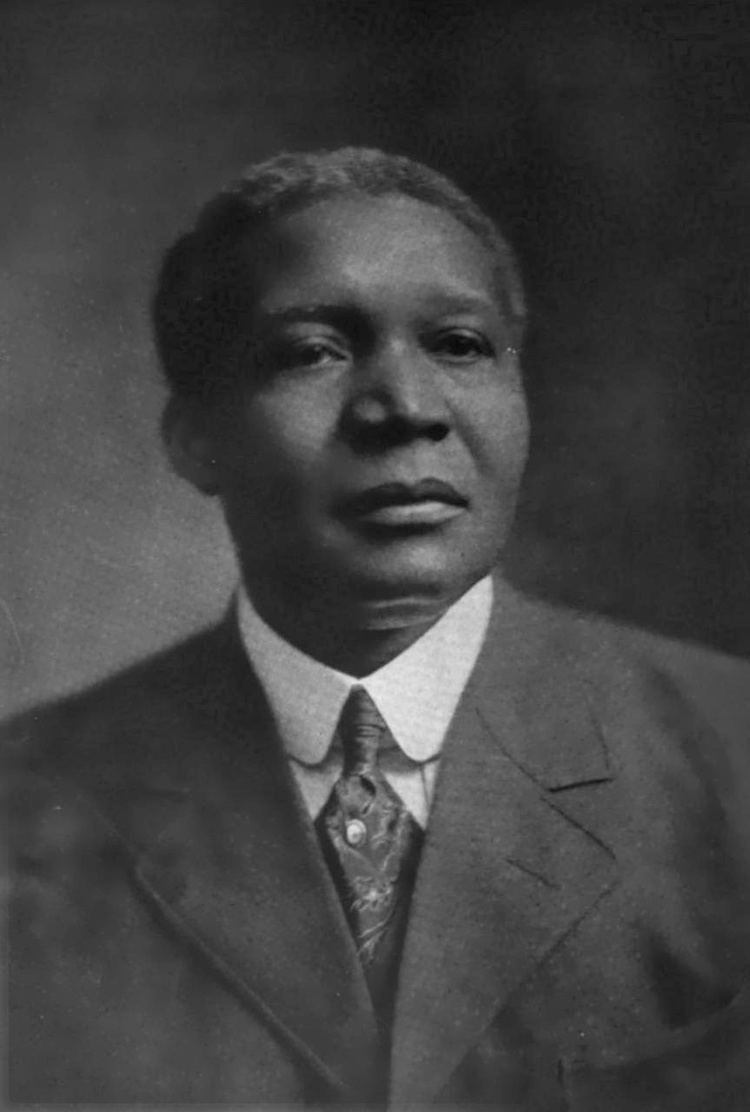Name Robert Moton Role Author | Education Hampton University | |
 | ||
Died May 31, 1940, Capahosic, Virginia, United States Books Finding a way out, Finding a Way Out an Autobiography - Scholar's Choice Edition | ||
Robert russa moton museum
Robert Russa Moton (August 26, 1867 – May 31, 1940) was an African American educator and author. He served as an administrator at Hampton Institute. In 1915 he was named principal of Tuskegee Institute, after the death of founder Booker T. Washington, a position he held for 20 years until retirement in 1935.
Contents
- Robert russa moton museum
- Ballet Hispanico Workshop at Robert Russa Moton Elementary School
- Biography
- Legacy and honors
- Public service
- References

Ballet Hispanico Workshop at Robert Russa Moton Elementary School
Biography

Robert Russa Moton was born in Amelia County, Virginia, on August 26, 1867, and raised in nearby Rice, Prince Edward County, Virginia. He graduated from the Hampton Institute in 1890.

He married Elizabeth Hunt Harris in 1905, but she died in 1906. He married his second wife, Jennie Dee Booth, in 1908. They had three daughters together: Charlotte Moton (Hubbard), who became a deputy assistant secretary of state at the State Department under President Lyndon B. Johnson; Catherine Moton (Patterson); and Jennie Moton (Taylor). All three married and had families.

In 1891, Moton was appointed commandant of the male student cadet corps at Hampton Institute, equivalent to Dean of Men, serving in this position for more than a decade. He was informally known as the "Major".
In 1915, after the death of Booker T. Washington, Moton succeeded Washington as the second principal of the Tuskegee Institute. While supporting the work-study program, he emphasized education, integrating
"liberal arts into the curriculum, establishing bachelor of science degrees in agriculture and education. He improved courses of study, especially in teacher training, elevated the quality of the faculty and administration, constructed new facilities, and significantly increased the endowment by maintaining his connections to wealthy white benefactors in the North."
During World War I, Moton traveled to Europe on behalf of president Woodrow Wilson. His duty was to investigate the condition of the African American soldiers. He often witnessed discriminatory practices. For example, during his investigation, Moton was confronted by an American general regarding twenty-six alleged cases of rape by black soldiers. The general told Moton that black soldiers were dangerous to themselves and women. Moton challenged these allegations, suggesting discrimination was motivating factor, and encouraged black soldiers to protest against segregation when they returned to the US.
Moton wrote a number of books while he served as principal. He attended the First Pan-African Congress in Paris in 1919, meeting other educators and activists from around the world.
In 1922 he was the keynote speaker at the dedication of the Lincoln Memorial in Washington, DC but was not allowed to sit with the other speakers.
In race relations, Moton advocated accommodation, not confrontation. He firmly believed that the best way to advance the cause of African Americans was to convince white people of black people's worth through their exemplary behavior. Never one to rock the boat, he didn't fight segregation or challenge white authority.
Moton sat on the boards of major philanthropic organizations with the likes of Andrew Carnegie and John D. Rockefeller Jr., and his influence was considerable. When Julius Rosenwald, president of Sears, Roebuck and Company, provided the funding to build more than 6,000 "Rosenwald" schools for rural Southern African Americans, Moton's skills were clearly in play behind the scenes.
In 1927 the Great Mississippi Flood of 1927 devastated the Delta. With the Mississippi flood waters covering the entire Delta, the Greenville, Mississippi levee was the only high, safe place for thousands of refugees. The vast majority of the people stranded on the levee were African Americans, and they were desperate for food, potable drinking water and shelter. Instead of evacuating them, African Americans were virtually imprisoned on the levee and forced to work at gunpoint. The conditions in the Greenville camp were the worst of any refugee site.
To avoid a scandal that would threaten Hoover's presidential ambitions, Hoover's friends urged him to get what they called "the big Negroes" in the Republican Party to quiet his critics, and Hoover turned to Robert Moton for the job. Hoover formed the Colored Advisory Commission, led by Moton and staffed by prominent African Americans, to investigate the allegations of abuses in the flood area.
The commission conducted a thorough investigation and reported back to Moton on the deplorable conditions. Moton presented the findings to Hoover, and advocated immediate improvements to aid the flood's neediest victims. But the information was never made public. Hoover had asked Moton to keep a tight lid on his investigation. In return, Hoover implied that if he were successful in his bid for the presidency, Moton and his people would play a role in his administration unprecedented in the nation's history. Hoover also hinted that as president he intended to divide the land of bankrupt planters into small African American-owned farms.
Motivated by Hoover's promises, Moton saw to it that the Colored Advisory Commission never revealed the full extent of the abuses in the Delta, and Moton championed Hoover's candidacy to the African American population. However, once elected President in 1928, Hoover ignored Robert Moton and the promises he had made to his black constituency. In the following election of 1932, Moton withdrew his support for Hoover and switched to the Democratic Party.
Moton was a member of the Gamma Sigma graduate chapter of Phi Beta Sigma fraternity, along with George Washington Carver.
Moton went on to retire from Tuskegee in 1935 and died at his home in Gloucester County, Virginia, in 1940 at the age of 73 where he was buried at the Hampton Institute. Tuskegee Institute named the field where Airmen trained during World War I after Robert Moton, in honor of everything he did for the institute.
Legacy and honors
There is no evidence that Moton, or any African Americans, had any knowledge of the unethical issues relating to the experiment during its implementation. Moton endorsed the study and provided institutional resources, including medical personnel. The study was finally shut down in 1972 amid ethical controversy. The victims of the study included numerous men who died of syphilis, 40 wives who contracted the disease, and 19 children born with congenital syphilis.
Public service
Moton played a role in various aspects of public service.
